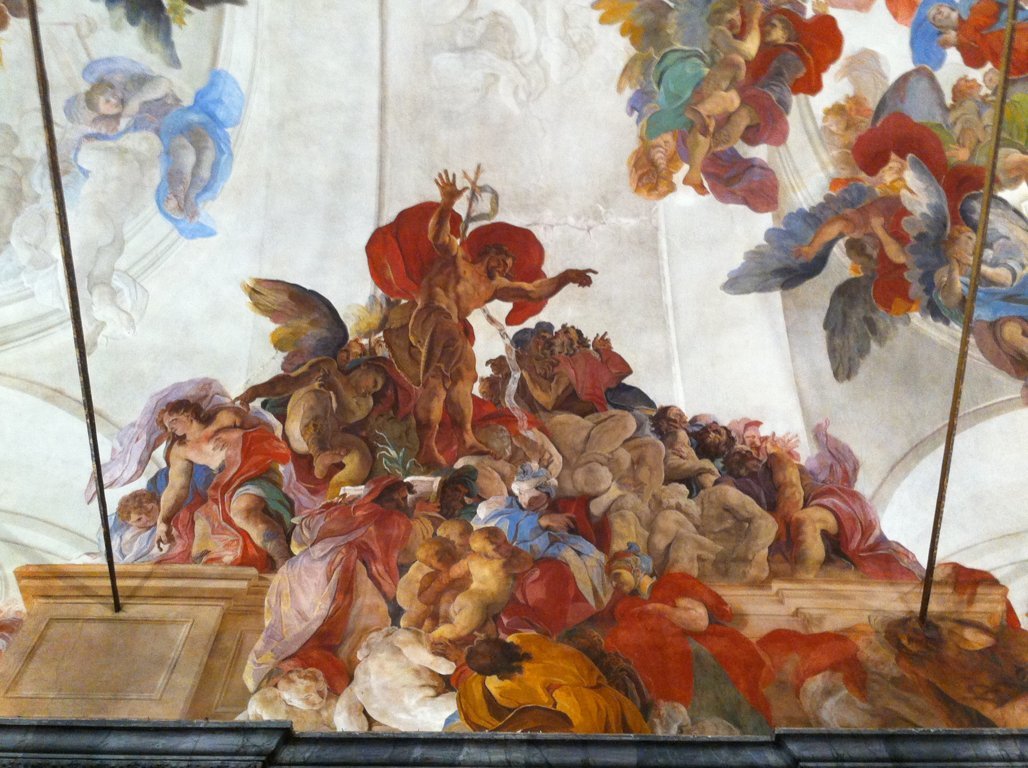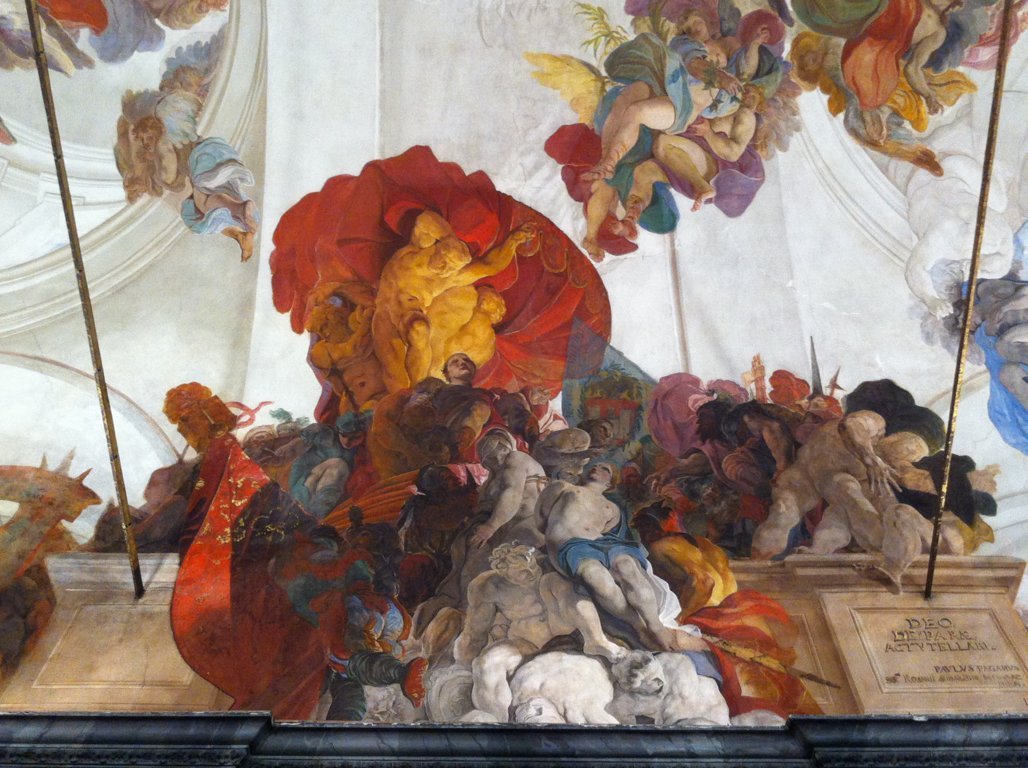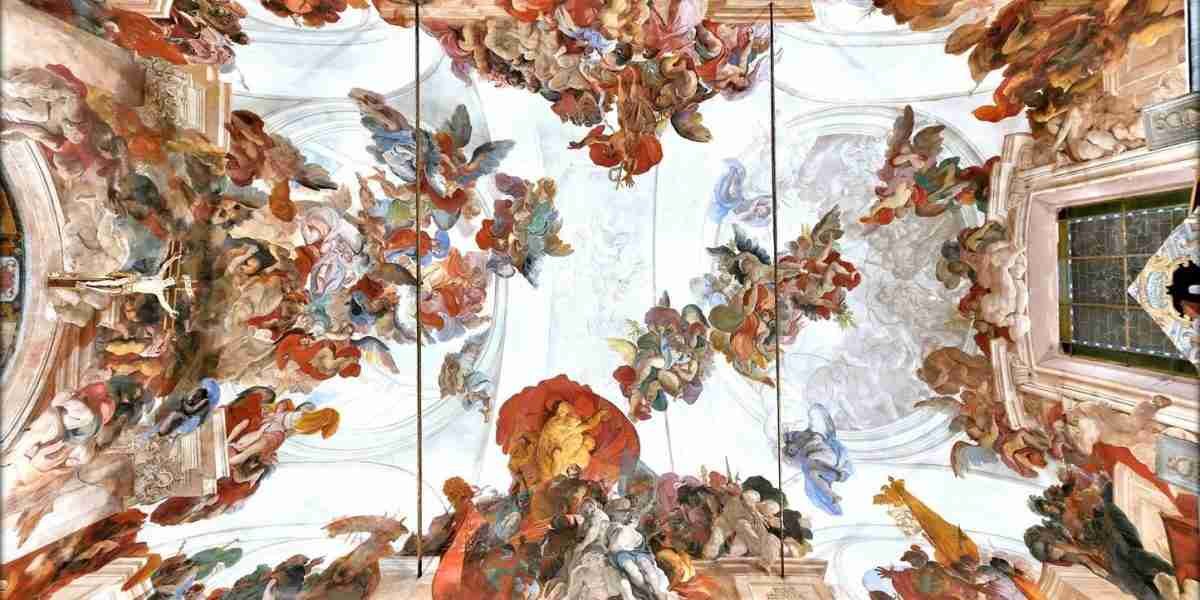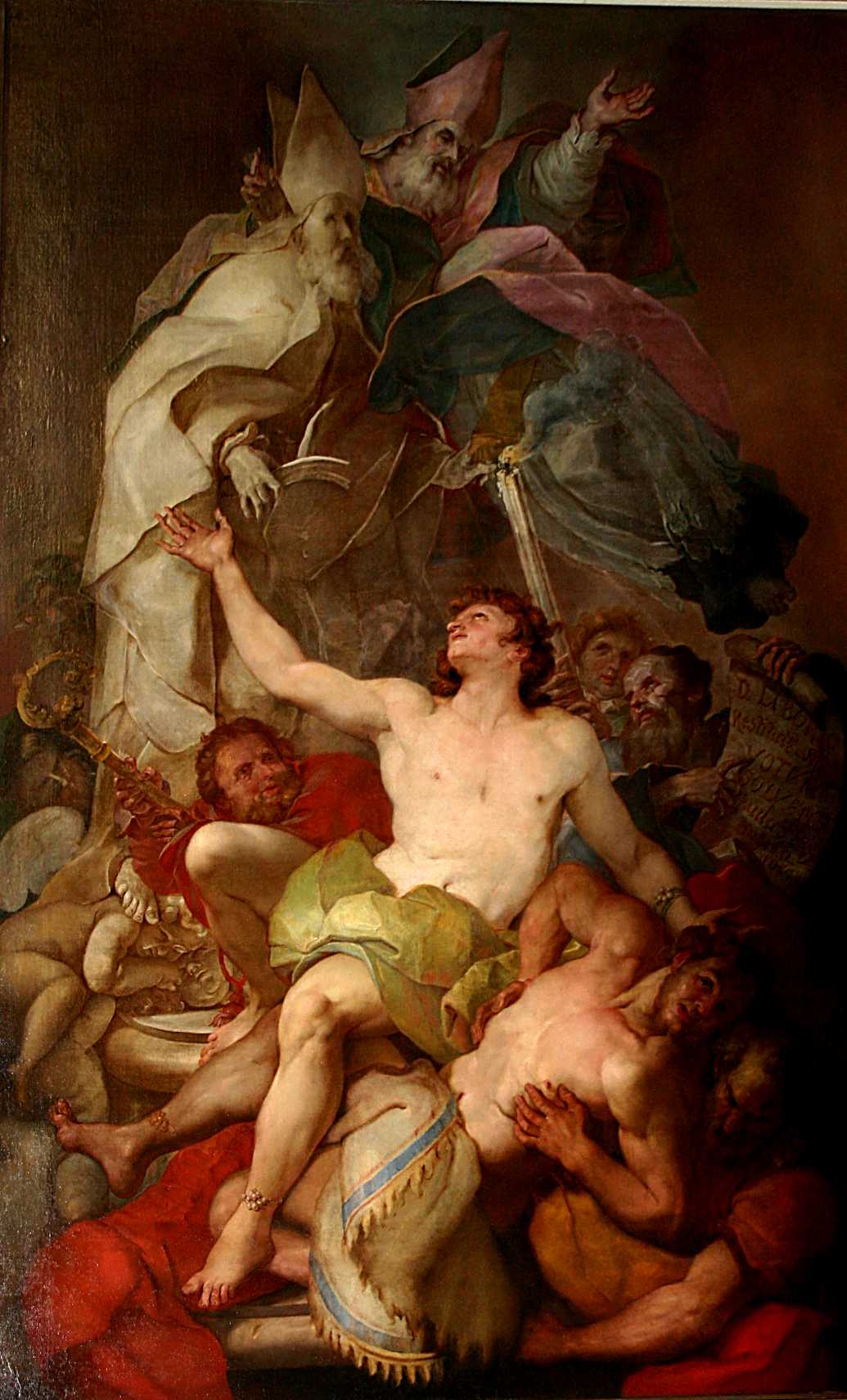Paolo Pagani and the marvels of transformation
Between failed aristocratic ambition and ungraspable styles, Paolo Pagani is the forgotten figure of Italian Baroque painting.
Looking at the works of Paolo Pagani, one wonders why his name doesn’t appear among those universally known by art lovers. Pagani was an eccentric, visionary, highly original painter, creator of infinite experiments. Yet, outside the circle of Baroque painting scholars, it is very rare to find anyone who knows even a single work by him. Fortunately, critics are showing a renewed interest in this rather elusive figure of 17th-18th Italian art. The recent studies of contemporary art historians such as Morandotti, Frangi, Pescarmona, Geddo, Zanuso just to name a few, are wonderfully bringing to light a formidable painter, someone who operated between reality and fiction, between disguises and falsifications, someone whose historicization has been marked by misleading attributions due to close similarities with some of his peers.

Paolo Pagani was born in Castello Valsolda on September 22, 1655 in a family of artists: painters, sculptors, stonecutters, masons, some of whom were also active in the construction of the Milan Cathedral. Pagani moved away from his native lands close to Lake Como still very young, just as many of his colleagues had done before, attracted by the great art scenes in Venice and Vicenza. Nothing is known about his earlier youth however. The first record of his work is when he, aged 25, signed as a printer a series of etchings by the engraver Giuseppe Diamantini. It is precisely Diamantini, hailing from the region of Marche but active in Venice, already the master of artists such as Rosalba Carriera, who supposedly influenced the young Pagani the most.

Research into Pagani’s formative years is difficult. Traces are lacking. His possible teachers might have been Johann Carl Loth, similar for the intensity of the scenes, or Giovanni Battista Langhetti, whose naturalism can be seen for example in Pagani’s Martyrdom of St. Erasmus, now at the National Gallery of Palazzo Spinola in Genoa, considered his oldest known painting and one of his finest works—the painting has been attributed to him only recently.
Ungraspable Pagani
Paolo Pagani’s mutable style makes his references hard to pin down. He was capable of changing register and model even in works from the same period. For example, he would imitate watercolor, as in the Stories of Samson and in the Lamentation of Abel at the Herzog-Anton-Ulrich-Museum in Braunschweig, or as in the Magdalene in the Gemaldegalerie in Dresden, painted between the ages of 25 and 35. Yet, opposite to that style, he would choose to roughly paint with oil, seemingly disregarding what he preferred only a few years earlier. Between the 1680s and 1690s, he was keen on dancing figures, plastically and softly modeled, possibly inspired by Louis Dorigny, an innovative French artist active in Venice.

Truth is that Pagani’s art is impossible to pin down. In the same years of his stay in Venice before 1690, his works remind of the earlier Luca Giordano, and again of the styles of Pietro Liberi and Diamantini. An example is the Healing of the Blind Man, now in the Galleria Sabauda in Turin: it has a very controlled composition, with clear and lightened colors on an icy and somewhat metallic surface. In other works of that time however, such as Jupiter and Semele now at the Moravska Galerie in Brno, there is virtuosity in rendering the anatomy of the figure’s muscles. The drapery is painted in detail, showing every small fold of the fabrics. The two paintings of Turin and Brno are a cold counterpoint to the softness of those in Braunschweig and Dresden, although all of them are from the same period of Pagani’s life. It seems useless to look for a straight path in the artist’s evolution. One should be content with appreciating this painter work by work. He thought out of the box, ready to betray his role models and even himself, imitating new styles and taking new approaches every time, perhaps just to meet the taste of a new client.

Pagani’s chameleonic character is also testified by the plethora of names to which his paintings have been attributed over the centuries. When alive, the artist did make an effort not to leave clear records in order to be able to wear different guises. Moreover, he hid from the painters guild in his early years, operating silently with the sole purpose of avoiding taxes, probably creating several works “in the manner of” before knowing some success in 1685.
Pagani Appears and Disappears
After his documented stay in Venice until 1690, Pagani disappeared from the radar. There is no later trace of his presence in the archives of the Italian lagoon city. The painter would come back in the records only on March 26, 1696 in Castello Valsolda, his hometown, busy with one of his most spectacular works: the decoration of the vault of the church of San Martino. What is certain is that Pagani would wander in foreign lands—Vienna, Moravia, Poland among others—during those six years.

In Kroměříž, in today’s Czech Republic, the artist worked on the frescoes for the summer residence of Prince Bishop Karl II von Liechtenstein-Kastelkorn. There exist several documents attesting to payments from abroad in those years, as the artist was hired by courts of pro-imperial Europe and perhaps also by Leopold I. Today, a series of Pagani’s works remain scattered between Central European palaces and museums, such as the drawings in the State Science Library in Olomouc, which attest to his preferred style at the time, torn between watercolor hues and rigidly academic drawing for the human figures.
Traces of Pagani’s fresco paintings are found again in the church of the Cistercian abbey of Velehrad in Moravia, as well as in the church of Saint Anne in Krakow, where his Saint Sebastian rests next to a majestic frame by Baldassarre Fontana, a stucco artist with whom Pagani would very often collaborate for his church installations.
At least two other significant works by Paolo Pagani from his years in Central Europe should be remembered: Hercules (1692-94), formerly held at Palazzo Leoni Montanari in Vicenza and now in a private collection; Saint Onuphrius (1694), now in the art gallery of the Capuchins convent in Voltaggio in Piedmont. Both Hercules and Onuphrius are depicted holding a very uncomfortable and precarious pose, seated on sharp rocks that make the viewers shaky, yet transmitting the vibrant tension between reality and fiction. We are facing a theatre set, in which stones seem to be made of papier-mâché, objects are scenically arranged, and a fake contemporary spot light is placed in the eye of an ox. Everything seems to belong to a film set. We can figure Hercules and Onuphrius dressing back up after a day of shooting while technicians free the space from props. Perhaps it is our modern look on Pagani, but the temptation to attribute to his figures the same instability and restlessness of their creator’s life is strong.
Pagani the Forger
Coming from a family of artists and artisans, married to the daughter of a ragman, Paolo Pagani cultivated the strenuous yet failed ambition to become an aristocrat. During the renovation of his house in Castello Valsolda after his return to his hometown, a noble ancestry and record of the “very ancient Christian faith of his family” surprisingly emerged. According to the “rediscovered” papers, an adventurous genealogy shows his family descend from a lineage without belief (not surprisingly “pagans”), a lineage that begins with none other than Ishmael, negative protagonist of the Old Testament, illegitimate son of Abraham, to continue with bloodthirsty leaders (and even a king of Africa) who converted to Christianity in the 13th century. “The Pagans, enlightened by God, eager to abandon Idolatry and embrace the true law of Our Lord Jesus Christ, professed the Catholic Faith, and had the honor of being held at the Holy Source by the Most Serene Count of virtue and Milan, Galeazzo Visconti, Vicar General of Emperor Frederick II … ”: so it reads.
[For more about deceptions and lies in Italian art history, here is the story of allegedly plagiarist Luca Pacioli. Ed.]
Recent studies show that those documents had been falsified thanks to Pagani’s calligraphic skills and heraldic knowledge. The main purpose of that forgery was for the Marquis Cesare Pagani, who had no heir, to be able to adopt the artist’s son Angelo. Mind you that this is not mere anecdote or pure vanity in Pagani’s biography. This story became the terrain of several judicial battles and occupied the artist’s mind for a long time, perhaps even distracting him from his work. The title was purely the artist’s invention, despite its plausible historical frame.
In the middle of legal trouble, Pagani would give the best of himself and come up with one of his greatest paintings: the decoration of the vault of the church of Castello Valsolda, which would include the fake coat of arms of his imaginary family. Furthermore, one of the protagonists of this story, the Marquis Cesare Pagani, certainly helpful in providing false documents, had a very significant role in the career of the artist: homonymous but not linked by any kinship, the Marquis was a diplomat to the Palatinate court, holding positions at the courts of Vienna, Madrid and Parma. He was the artist’s patron, client and impresario, favoring him in various commissions, especially in the pro-imperial courts.
Pagani and Masterpieces
Overall, 80 works by Pagani still exist today, comprising frescoes and paintings on canvas, some of which are well documented and others more or less recently attributed to him. This corpus spans several stylistic turns all marked by excellence, making him worthy of the ranks of the greatest artists of the Italian Baroque period, much beyond the interest of his scholars.
The aforementioned Healing of the Blind Man at the Sabauda Gallery in Turin should be listed among these masterpieces, along with the aforementioned Stories of Samson in Braunschweig, The fall of the Giants at the castle of Azay-le-Ferron in France, the study of nudes at the National Gallery of Ireland in Dublin, the spectacular Descent to Limbo at Villa Gallia in Como, Saint Anthony in the Capuchin church in Chiusa d’Isarco, where the painting seems to glow in the dark thanks to an uncanny fluorescence in the palette.

The so-called Martyrdom of Saint Erasmus, now housed at the national gallery of Palazzo Spinola in Genoa, should also be counted among the best works of Pagani. The painting had been purchased by the city council from Zabert gallery in Turin in 1982 when the work was still attributed to Giovanni Battista Langhetti. The subject of the painting is still open to interpretation, as Pagani would mess with traditional iconographies by subtracting symbolic details and adding new ones.
The style, however, leaves no doubt: the Martyrdom of Saint Erasmus is a Pagani piece, with a theatrical set up of the scene, typical contrasts of light and dark, the characteristic “sunken eyes” of some characters, and with the exasperated executive rhythm typical of the artist’s youthful years.
A very strong tension in the drawings, the dancing rhythm, the spasmodic search for formal elegance are also found in another very successful work by Pagani: the Sacrifice of Isaac (c. 1685-90), held in the Salvioni Capello palace in Venice. Strongly influenced by Louis Dorigny, the work represented Pagani in the great exhibition on Venetian painting held in Venice in 1959.
Pagani and the Spectacular Valsolda Turn
Upon returning to Italy after his experience in central Europe, Paolo Pagani wanted to offer a gift to his land: he bore the costs for the completion of the church of San Martino, which had been under construction since 1578, and took care of the frescoes on the vault. A note dated January 1, 1697 from the priest’s diary reads: “Pagani had our parish church of San Martino di Castello wrapped up at his own expense and by his own hand he painted it. In one year and a half everything was reduced to perfection as we see today.” These frescoes are the most ambitious and reckless works by Pagani. He painted the preaching of St. John on one side and, on the opposite side, the death sentence of the saints Apollonia, Catherine and Lucy, thus linking his inventions to the subjects of the works already present in the side chapels.

Symbolically, Pagani depicts the struggle between good and evil, a recurring theme in his works. On the one hand, the good with the Baptist, a reference to the saving value of the Messiah through the saint’s preaching to a group of incredulous figures. On the other hand, there is evil, portrayed by a Roman judge sending the three saints to death for their obstinate embrace of Jesus Christ. The light colors on the faces of the saints are the chromatic counterweight to the dark ones of the soldiers who martyr them, while a play of shadows and chiaroscuro is aided by the natural light that filters through the only window on the facade. In the central area of the vault are the chosen souls: angels who accompany the saints, whose ascension to the focal point of the vault is the Virgin in heaven, surrounded by a plethora of figures: archangels, apostles, Roman soldiers, philosophers of the ancient world and priests.

For the frescoes in Valsolda, Pagani composed in clusters, totally disregarding the laws of gravity and optics. He was not concerned with a central point of view for the spectator, as he multiplied the vanishing points, introducing an autonomous and chaotic balance into the decorative complex, intuitively rendering a missing perspective and focusing on quick, superimposed, and sketched brushstrokes. Everything was done directly on the plaster, without a trace of any preparatory drawing. The artist favored the contrast between the almost monochrome architecture and the iridescent, colorful garments of the characters, painted with an extensive palette.
Among the artists who probably influenced Paolo Pagani on his return to Italy, Sebastiano Ricci and Domenico Piola should be mentioned. After 1696, his style became more and more intense and reckless, especially in the excessive iconographic freedom. An example of this attitude can be seen in the Forge of Vulcan, now in the Clovis Whitfield Gallery in London, where a character in the foreground is about to turn around and show off her buttocks dressed in an unlikely pair of “animalier” underpants.
[More about painting in the place for which it was thought? Here is a reflection on Tiepolo’s frescoes. Ed.]
Perhaps it is for this type of bizarre choices and for his intolerance to the rigid iconographic canons that Pagani’s works were accepted in churches only thanks to the solicitude of his patron or because he personally gifted them. In any case, the vault of the church in San Martino in Castello Valsolda is not only a masterpiece in the artist’s career, but in all of the Italian Baroque painting. As scholars mention, had those frescoes been painted in a less secluded place, his fame would have been much bigger.

Pagani and Kidney Stones
Another masterpiece by Paolo Pagani is in the church of San Marco in Milan, more precisely in the chapel next to the presbytery. It is a painting from 1712, made as an ex voto for St Liborius to celebrate the end of a disease. The saint, who is quite rare as a subject, was considered the protector of the sufferers from kidneys and urinary diseases, a condition that according to documents the unfortunate painter also experienced.
True to his style, Pagani reinvented the subject. He crowded the lower and central part of the composition with a group of sick people who invoke the protector. One of the sufferers holds his hips in pain, accentuating the narrative effect. The story should be followed from the bottom to the top of the composition: the upper part of the picture depicts the saint appearing miraculously, emerging from a statue of himself as if he were its soul. Pagani seems to stage his biography, his ambitions, his hopes and even his own kidney sickness.

This painting, which was donated to the church by Pagani himself, well synthesizes its maker: one can find his early models—Lombard painting in the style of Procaccini—but also the delicate chromatic research of his Venetian years. His tribute to the saint, who had supposedly freed him from kidney disease, is therefore the most “pagan” of the Pagani’s, made only a few years before his death. Four years after completing St Liborius, the painter died of kidney failure, a disease that had never really left him. A Baroque artist yet constantly abandoning trends, Pagani was an ungraspable figure, not by chance associated with painters to come such as Johann Heinrich Füssli and William Blake: artists with a timeless, dreamlike and visionary sensibility.
Bibliography
- D. Pescarmona, “La pittura del Seicento a Como” in Mina Gregori (a cura di) “Pittura a Como e nel Canton Ticino dal Mille al Settecento”, Cinisello Balsamo, 1994
- G. Geddo, “Ritrovamenti sul marchese Cesare Pagani committente del pittore Paolo Pagani”, in Paragone, XLVI, 1995
- M. Karpowicz, “Artisti Valsoldesi in Polonia nel ‘600 e ‘700”, Menaggio, 1996
- M. Togner, “Paolo Pagani kresby/drawings”, Olomouc, 1997
- F. Frangi, “Da Castello Valsolda a Milano: gli anni lombardi di Paolo Pagani” in “Paolo Pagani (1655-1716)”, catalogo della mostra (Rancate – Campione, 20 settembre-29 novembre 1998) a cura di F. Bianchi
- A. Morandotti, “Paolo Pagani e i Pagani di Castello Valsolda”, Lugano, 2000
October 25, 2022
